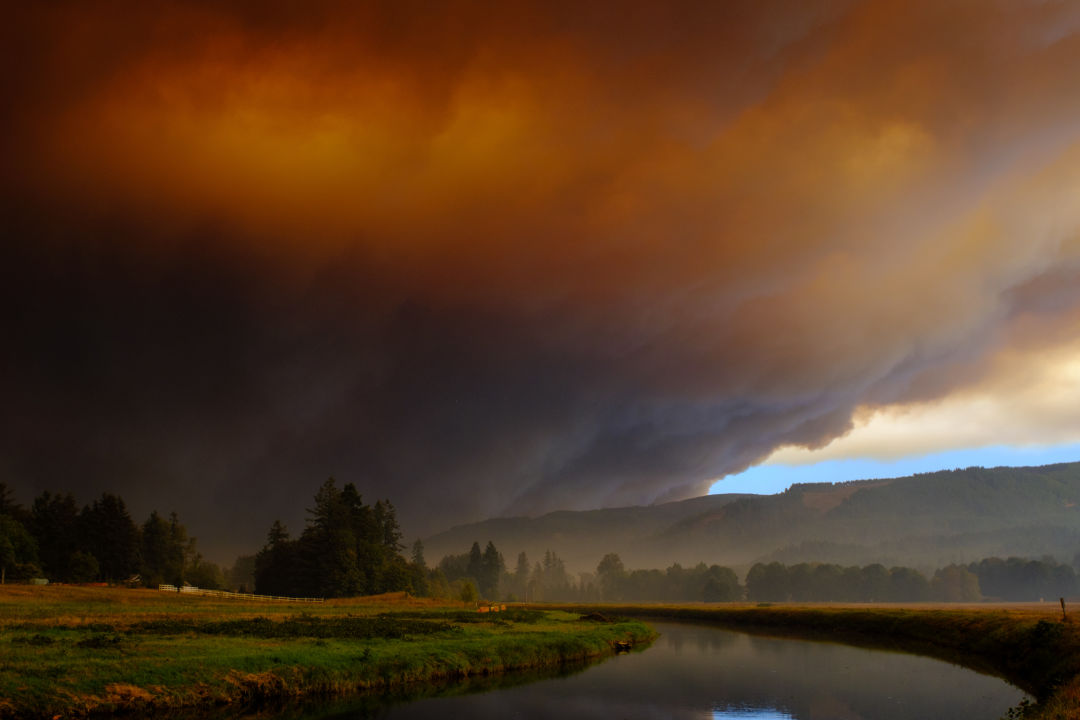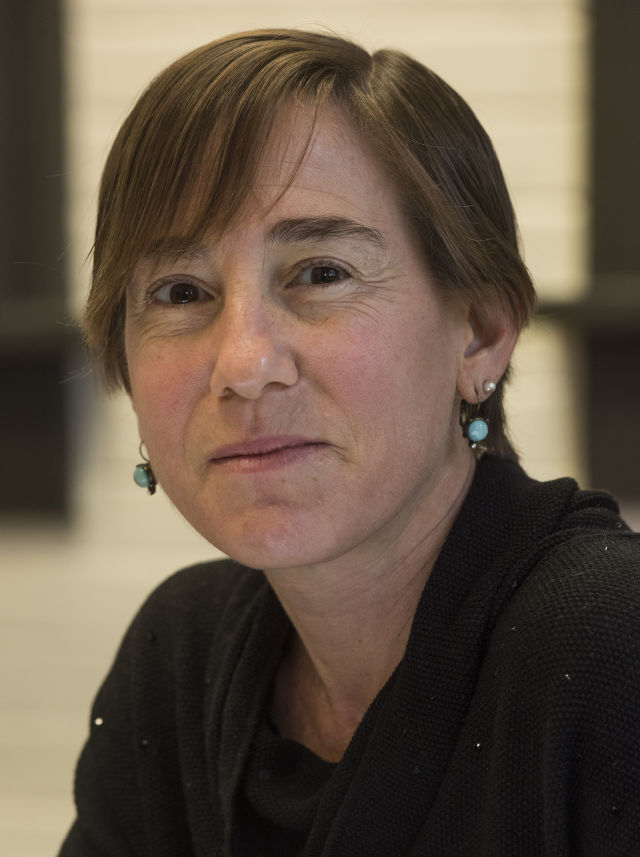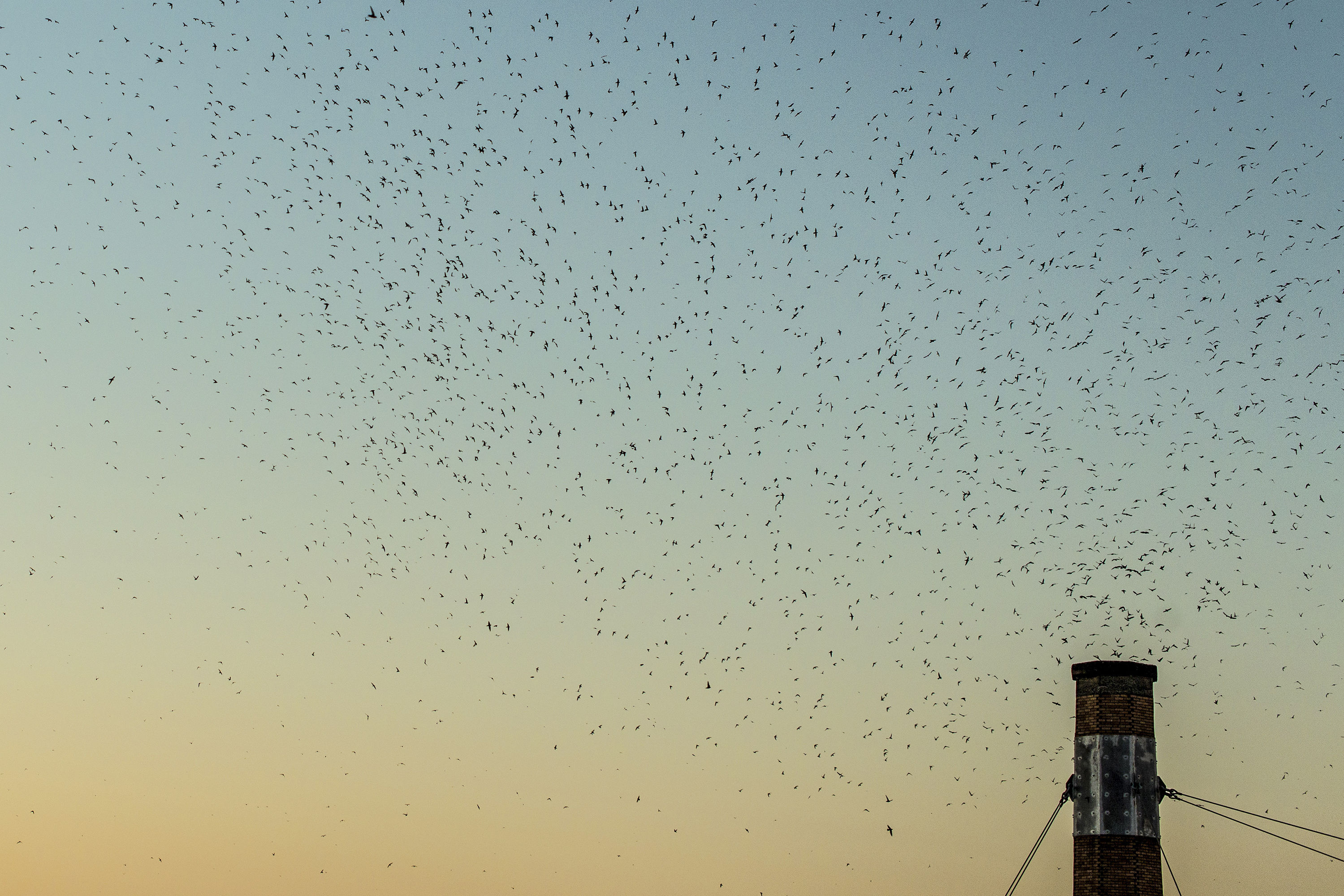An OSU Professor Breaks Down Climate Change and the Future of Wildfires in the West

Walterville, Oregon, on September 9.
The West Coast is in pretty bad shape right now. Wildfires have destroyed entire rural communities in Washington, Oregon, and California, leaving much of the metropolitan area covered in “hazardous” or “very unhealthy” smoke, ash, and debris (even reaching as far as Maine).
Enormous though the class of 2020's wildfires might be, the region is no stranger to blazes around this time of year. Climate change, weather patterns, and human settlement across the west have all played a part in these fires, says Erica Fleishman, director of the Oregon Climate Change Research Institute and professor in the College of Earth, Ocean, and Atmospheric Sciences at Oregon State University. Portland Monthly spoke with Fleishman about global warming, vegetation communities, and the future of wildfires in the west.
Portland Monthly: I think there are combating arguments that what we’re seeing right now is a result of climate change or that it’s a result of bad logging practices and forest management. Can you break down what is fueling these fires?
Erica Fleishman: In general, there are three things coming into play. That’s long-term climate change, shorter-term weather patterns, and changing patterns of human settlement across the west.
In terms of long-term climate change, across the western United States, temperatures are increasing, and drought is becoming more frequent and stronger and of longer duration. And the drought is not so much a function of changes in precipitation, although that certainly plays a role, but the fact that the water that is arriving in the west is drying up faster because it’s warmer and because, in the mountains, more precipitation is coming as rain than as snow. Also, the precipitation over time is becoming somewhat patchier. So the total amount of precipitation may not change, but there are tending to be fewer and more intense storms.
All of that changes the amount of water that’s available to plants, and that can be either in agricultural systems or what we think of as more natural systems. All of that means that the vegetation is drying out faster, and so when there’s a spark, it’s going to carry faster. You can think of that just like trying to start a fire in fireplace [versus] a campfire when you have wet wood. It’s hard to get a fire going. You want nice, dry wood to get things going.
Then there’s the shorter-term weather patterns. In Oregon, we saw quite strong winds coming in from the east last week…. When there’s a spark during those conditions, fires can spread very rapidly. They can be dangerous for people fighting the fires. We’ve seen that in some cases where firefighters were forced to retreat because it wasn’t safe for them to be on the frontlines.
Then there’s the patterns of human settlement. Most fires in the western United States are ignited by human activity. That doesn’t mean arson, although there are some arson fires, but that means anything associated with human needs and desires, so power lines that have gone down … it could be related to burning debris, which is not illegal unless there’s a burn ban, it could be related to smoking, to kids horsing around, to railroads, any number of things. But the fact is, humans just going about their daily lives, we’re going to create some sparks.
An additional factor is where humans are living. More and more humans are living in what’s often referred to as the Wildland Urban Interface, so that means that humans are moving out from established urban areas and suburbs and living in areas that are somewhat more rural and fire-prone.
There’s a push from some people to refer to the fires we’re seeing as “climate fires.” What’s your sense of that? Thinking about all of those factors that come into play, is it accurate to refer to these fires as climate fires, and what’s the significance of talking about them in that way?

Erica Fleishman's research focuses on ecological responses to variability and changes in climate and land use in the western United States.
Image: Courtesy Erica Fleishman
As climate changes, these fires become more likely. The number of fires, the size of the fires, some of the dynamics of individuals fires where they’re creating their own weather, example, those are all consistent with what has been projected by people that study climate science, and changes in vegetation, and changes in human settlement, and land-use patterns for decades. So certainly these are the types of patterns that are consistent with what we expect with climate change.
One can’t point to a fire and say this is because of one thing, but certainly the pattern we’re seeing over time, it’s not just one fire or one fire season, looking at fire seasons in the west over the past five to 10 years, it’s likely to be like this or to get worse as climate continues to change.
I think more commonly we hear about prescribed burns as a way to better manage our forests, but what are some other methods we haven’t quite heard of that could be more beneficial?
Sometimes there can be a tendency, especially for people who live in wetter areas of the Pacific Northwest, to think of the fires that are going on as all forest fires. So one thing that is important to keep in mind is that not all of the fires across the west are actually occurring in forests.
A subset of them are occurring in forests, and there’s a lot of legitimate scientific debate about forest conditions and what can be done to manage those areas to reduce the likelihood of large fires. Certainly the fact that people are living in these areas more and more means that when there’s a lightning strike or some type of human activity causes a spark, these areas are more likely to burn. So some of it is reducing the likelihood of a fire becoming large, and some of it is trying to create defensible space, trying to ensure that there are evacuation routes. One can think of it in terms of looking at the fire per se, and looking at minimizing the loss of life.
Indigenous communities have used fire over millennia and used it quite effectively. I think there is increasing interest by society as a whole and by the western scientific community in terms of how Indigenous communities have applied fire and managed risk, and thinking about, ‘Is there traditional knowledge that can be used to help modern western societies manage those risks more effectively?’”
You brought up the point that perhaps some people think these fires are predominately in forests. Are any other misconceptions that you think people have about the fires?
There are a lot of vegetation communities that are adapted to fire…. Fire is an aspect of a lot of these ecosystems. I think that is something that in some ways is easy to forget. It also can be easy to forget that there have been major fires in the past for any number of reasons. The patterns that we’re seeing now are somewhat different, but fire has always been a part of these systems to some extent.
Pretty much anywhere in the western United States, fire is going to be a part of these systems. There has been quite a bit of discussion about whether fire suppression policies over the past hundred years or so [have] contributed to the magnitude of fire that we’re seeing right now. Some of the questions about thinning trees or cleaning out understory relate to the fact that, in some cases, fire has been prevented from coming through these systems for quite a while.
In some areas that are pretty remote and there aren’t very many human settlements or there’s not much potential for human losses, there’s increasing discussion … on allowing that fire to go, to try to reintroduce fires into these systems.
These fires are certainly unusual but are they unprecedented? Is there anything in Oregon’s wildfire history that comes even remotely close to what we’re seeing?
There have been some fires like this in the past, not a huge number of them, not very frequent, but very large fires that were driven by strong winds from the east.
When people are talking about the fires being unprecedented now, they’re usually referring to the fires in the aggregate, so the number of fires across the west as a whole, the size of the fires across the west, the extreme behavior of some of the fires creating tornadoes and things like that, and the fact that fire seasons like this are happening year after year.
Kind of a broad, outward-looking question, but what can we do? I think there’s a general feeling of helplessness. But is there anything we can do right now in terms of combating these fires?
One thing people can do is to vote. So talk with people who are running for office about how they regard the different causes of fire that potentially something could be done about, whether that’s zoning regulations or if they support local preparation [efforts]. What are their feelings about climate mitigation and about mitigating emission of greenhouse gasses?.… It can sound trite, but voting and talking to elected officials and letting them know what priorities are is really, really important.
There also are some immediate things. For any of us that are landscaping or maintaining areas around our houses or communities, thinking about, ‘If a fire started somewhere nearby, what would help reduce the chances that our homes or our businesses would burn?’ If we’re doing renovations, are there materials that are less likely to burn?'
I think that, as communities, we also could think about who tends to lose the most in these types of situations. A lot of times, like everything else, people that are economically disadvantaged are suffering quite a bit…. So thinking about, are there ways that we can support our communities with general social services, how we’re dealing with affordable safe housing?
Regardless of anyone’s politics and what they think are the most important things or the highest priorities to address, almost everyone can find something that they can do to reduce their own risk or reduce the risk to their community.
Listen to Erica Fleishman speak about how climate change is affecting the West Coast wildfires in this episode of Footnotes.




